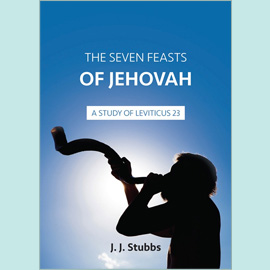Dear John,
It is now time to put learning into practice. There are three procedures for investigating any book of the Bible.
1. Repeatedly read through the book, because the key rule for study is read, read, read!
2. Divide it into logical paragraph sections for analysis.
3. Study each section verse by verse on the OIA principle (Observe what is there; Interpret what it means; Apply it to your life).
There is no substitute for this verse-by-verse analysis. But you must not lose sight of the wood for the trees, so it is important at the same time to have an overview of the whole book. Of course, an accurate overview is only possible after detailed study, but you can get a broad idea of a book by using the following five headings, suitable for any New Testament epistle: Author (who wrote it), Background (when, why and to whom it was written), Construction (the structural pattern of the book), Distinctives (how it differs from other New Testament books) and Encouragement (why it is especially enjoyable and helpful for the believer). If you can apply this method to one letter you will be able to apply it to them all. What follows is an approach to Paul’s letter to the Ephesians.
Author
Look through the letter and jot down all the personal references to see what they tell us about the writer. When you have collected them, sort them methodically into headings or points. Here is a possible list, with some practical applications.
Clearly, Paul is the writer (1.1; 3.1). The first thing we note is his apostleship (1.1). Paul had divinely-given apostolic credentials: he had seen the risen Christ (1 Cor 9.1), he had power to work sign miracles (2 Cor 12.12), and he taught with divine authority (2 Pet 3.2). This last means that what Paul says, the Lord says (1 Thess 4.15). To disobey his writings is to disobey the Lord. Further, he had a deep concern for the spiritual progress of God’s people (Eph 1.15-17). May we be similarly interested in the welfare of believers. A man of steadfast consistency, he practised what he preached (1.16; 6.18), showing a moral as well as apostolic authority. Nevertheless, suffering (3.1,13; 4.1; 6.20) dogged his steps. Ephesians, like Philippians and Colossians, is one of the prison epistles, a product of Paul’s Roman confinement for the sake of Christ. Paul’s life proves that faithfulness to Christ does not necessarily guarantee prosperity down here. Paul’s privilege was to be specially entrusted with the revelation of God’s secret about Christ and the Church (3.2-7). Yet he was marked by humility (3.8), glorying not in attainment or wisdom but in God’s grace (3.2,7,8). And humility produced reverence (3.14): his grasp of truth generated an attitude of awe. Those who know the Scriptures best will fear God. Although it seemed later as if there was little fruit to show for his time in Ephesus (2 Tim 1.15), the issue for Paul was not outward success but faithfulness to the divine commission (Eph 6.19-20). Whatever the results, we are to be true to the Word. Paul, however, did not despise the prayers of the saints; rather, sensing his own dependence (6.19), he coveted them. If an apostle needed prayer, how much more do we? Finally, Paul loved fellowship (6.21-22), and was happy to share his experiences with believers to keep them informed. The value of a local assembly is that it provides a sphere for sharing in the things of God.
Background
Background sounds boring, but it can throw much light on the Word. The book of Acts and a good Bible encyclopaedia will quickly illuminate the setting. Ephesus, the leading city of the Roman province of Asia, with an estimated population of around 250,000, was noted as a centre of politics; indeed, it was the de facto capital of the area (Acts 19.31). As the third or fourth greatest city in the New Testament world it was also a centre of commerce, situated on the River Cayster, 6 miles from the sea, but linked by a connecting channel. A centre of religion, it boasted the Temple of Diana or Artemis, with vast columns of marble overlaid with gold, one of the seven wonders of the world (19.24,35), long lost but rediscovered in 1869 under 20 feet of soil. Not surprisingly it was also a centre of tourism (19.24-29) with a thriving souvenir industry and 25,000-seater theatre. It was therefore an ideal base for gospel work (19.10), for the early evangelists went to where needy people were.
Paul’s Ephesian experience recorded in Acts 19 is mirrored in the development of his letter. Believers are called out from the world by God’s sovereign intervention (Acts 19.8-10; Eph 1-3), their conduct is influenced by their new life in Christ (Acts 19.18-20; Eph 4-5), and they inevitably face conflict with a hostile society (Acts 19.23-41; Eph 6). The assembly was instructed by Paul during a two-year stay, later followed up by his ministry to the elders (Acts 20.17-38), this letter from Rome, and the sending of Timothy to continue their training (1 Tim 1.3). The sad final word comes in Revelation 2.1-7. Despite having more teaching than any other assembly, Ephesus is finally accused of having left its first love. Paul’s warning is therefore still relevant (Acts 20.31-32). Whatever our privileges we must stand firm against doctrinal error, against spiritual complacency, against moral failure.
Construction
Every book has its own structural pattern. This one falls into two parts:
Part 1 1.1–3.21 (ending with "Amen")
Part 2 4.1-6.24 (again ending with "Amen").
Part 1 is about what God has done for us (it is full of doctrine); Part 2 is about how we should live (it emphasises our duty). The connecting word "therefore" (4.1) signals the shift from the first part to the second. This logical progression makes the point that daily behaviour must rest on the firm foundation of sound doctrine, and true doctrine must always result in godly conduct. You see, what I believe influences how I live. It is a solemn challenge: Am I "walking worthy" of God’s high calling? (4.1).
Believers are described in three positions: "sit" (2.6), "walk" (4.1), and "stand" (6.14). As victors we sit (1.1–3.21). We are seated (a fact, not a command) with Christ in the heavenlies (1.20; 2.6) where He is enthroned in all the dignity of His finished work (Heb 1.3; 10.12; 12.2). This describes our blessings. As pilgrims we walk through a dark and dangerous world (Eph 4.1–6.9), for our responsibility is to live down here as those who belong to Christ. This describes our behaviour. As soldiers we stand (6.10-24), holding our God-given ground against the assaults of Satan. This describes our battles. While it is physically impossible to sit and walk and stand simultaneously every believer is in the good of these truths: we rest in what Christ has done, we progress through a sinful world to glory, and we fight against spiritual wickedness.
Distinctives
Try counting key words to get an idea of the letter’s major interests. For example, "church" and "body" both appear 9 times, "grace" 12 times. Ephesians unfolds the unique character of the universal church (3.2-13), that vast invisible company of believers formed at the Day of Pentecost and completed at the Lord’s return. To indicate its dignity, Paul uses three illustrations. It is the body of Christ, animated by His life (1.22-23); it is a temple in the Lord, filled with His light (2.21); and it is His bride, the object of His love (5.22-33). The metaphor of "one new man" (2.13-15) announces an entirely new work whereby saved Jews and Gentiles are joined together in equal blessing. The church in its universal aspect is a new, heavenly assembly of people, unheard of in the Old Testament, wholly one in Christ, and destined for glory. Could we be in better company? Second, Paul unveils the comprehensiveness of God’s purpose (1.9-10) to glorify Himself in redeemed sinners, finally heading up all things in Christ. Believers know the ultimate goal of history! Third, we discover the astonishing completeness of our blessing (1.3-9), blessing which goes out in accordance with God’s grace rather than our need. Fourth, we are given insight into the conflict of the believer with a Satanically-dominated world (6.10-20). Finally, we are reminded of the contrast between what we were and what we are (2.11). We were dead (2.1-3), but are now alive (2.4-7); we were distant (2.11-12), but are now made near (2.13-18); we were defiled (4.17-19), but now are holy (4.20-24); and we were darkness, but now are light in the Lord (5.8).
Encouragement
How is this letter especially valuable? By lifting us up into "the heavenlies" (1.3) it is the divine antidote to depression, lethargy, and irresponsibility. When you feel discouraged, read the first three chapters and become taken up with God’s amazing programme of grace to rescue and ennoble helpless sinners. If that does not cheer you, nothing will! Ephesians reminds us that all we have is "in Christ" (try counting the occurrences of the phrase). He is the origin, the sphere and the end of our blessings. No wonder Christians love to give Him the pre-eminence!
Keep reading!
Much love in Christ Jesus,
David
To be continued.









